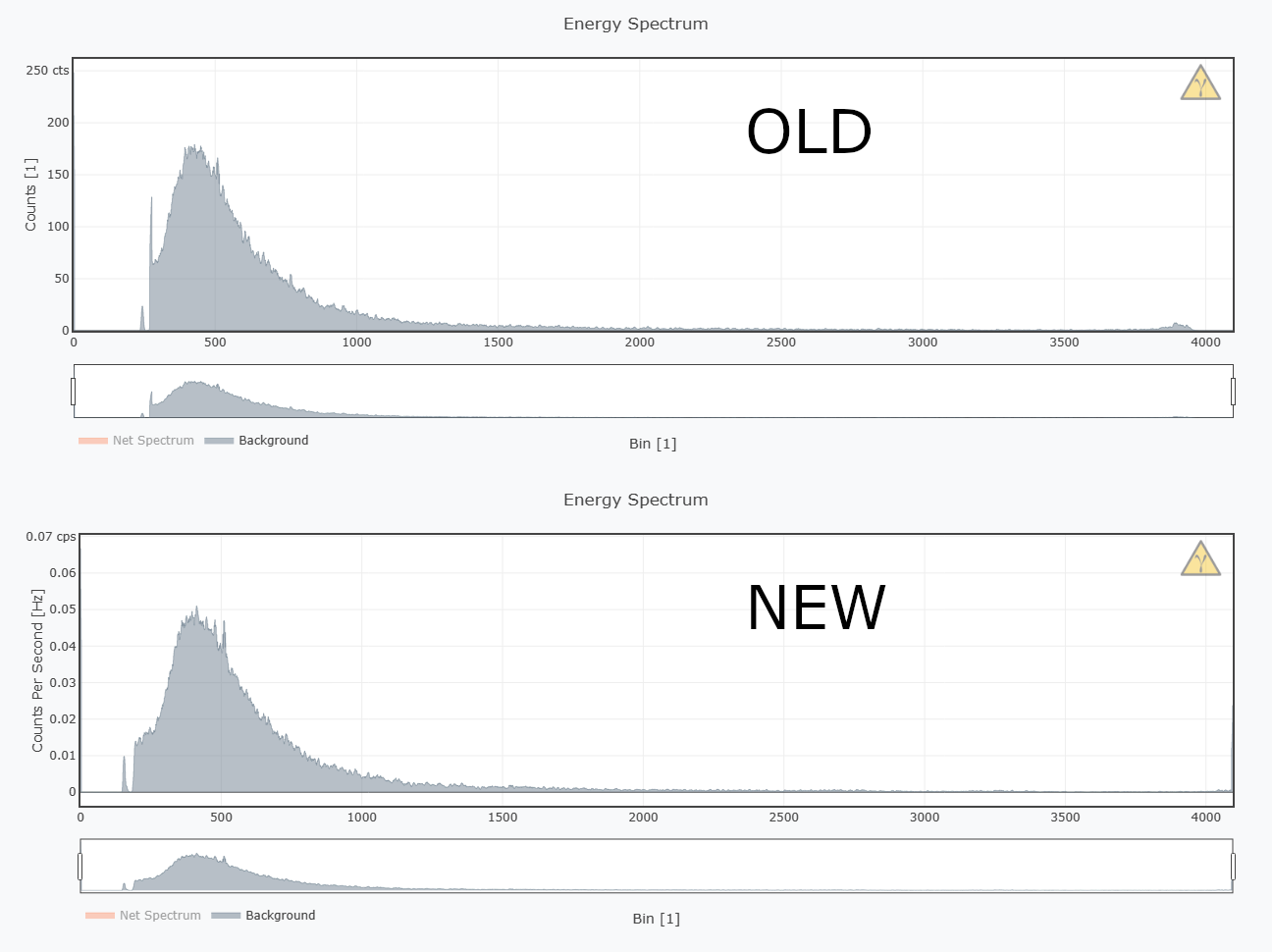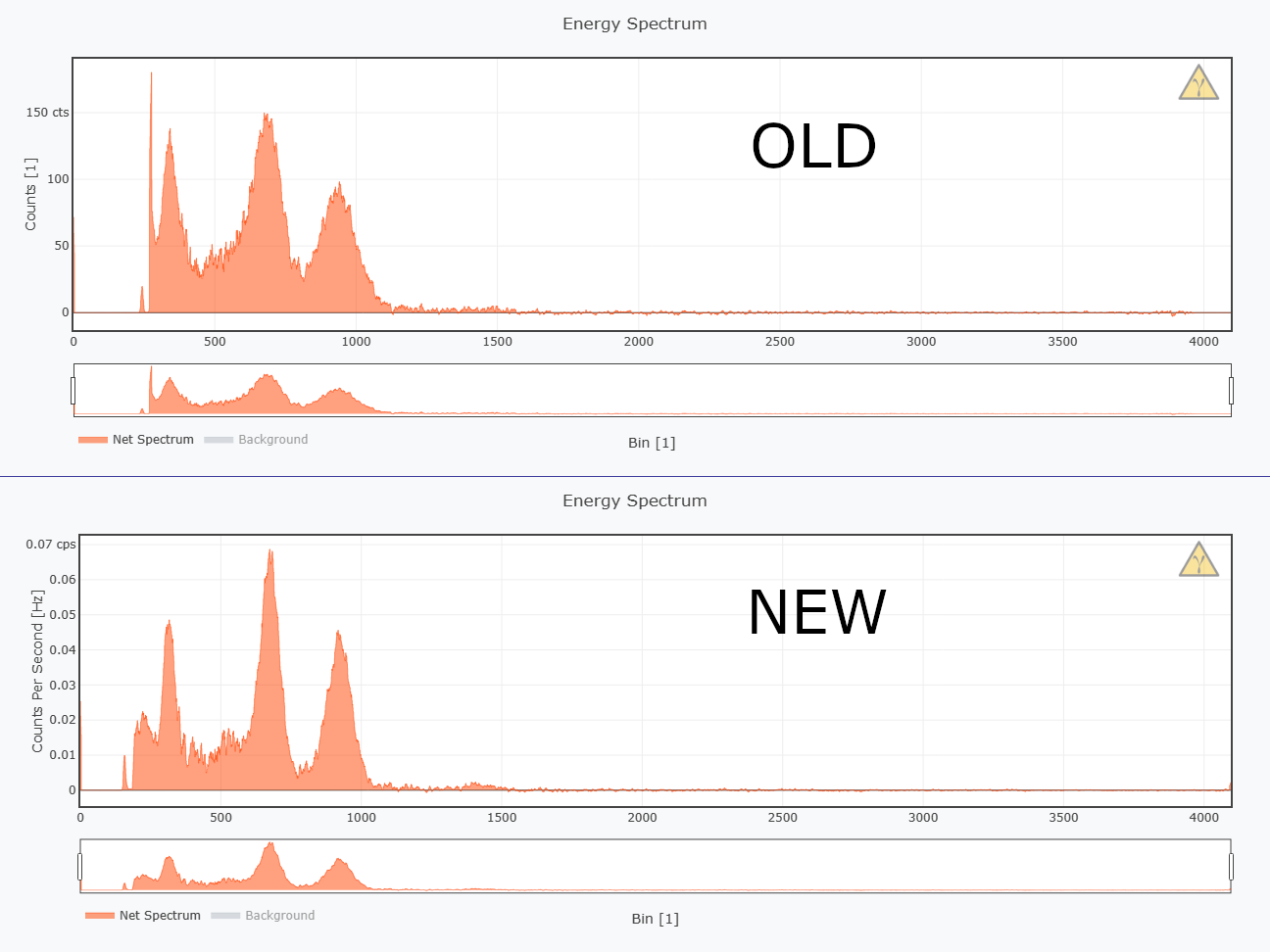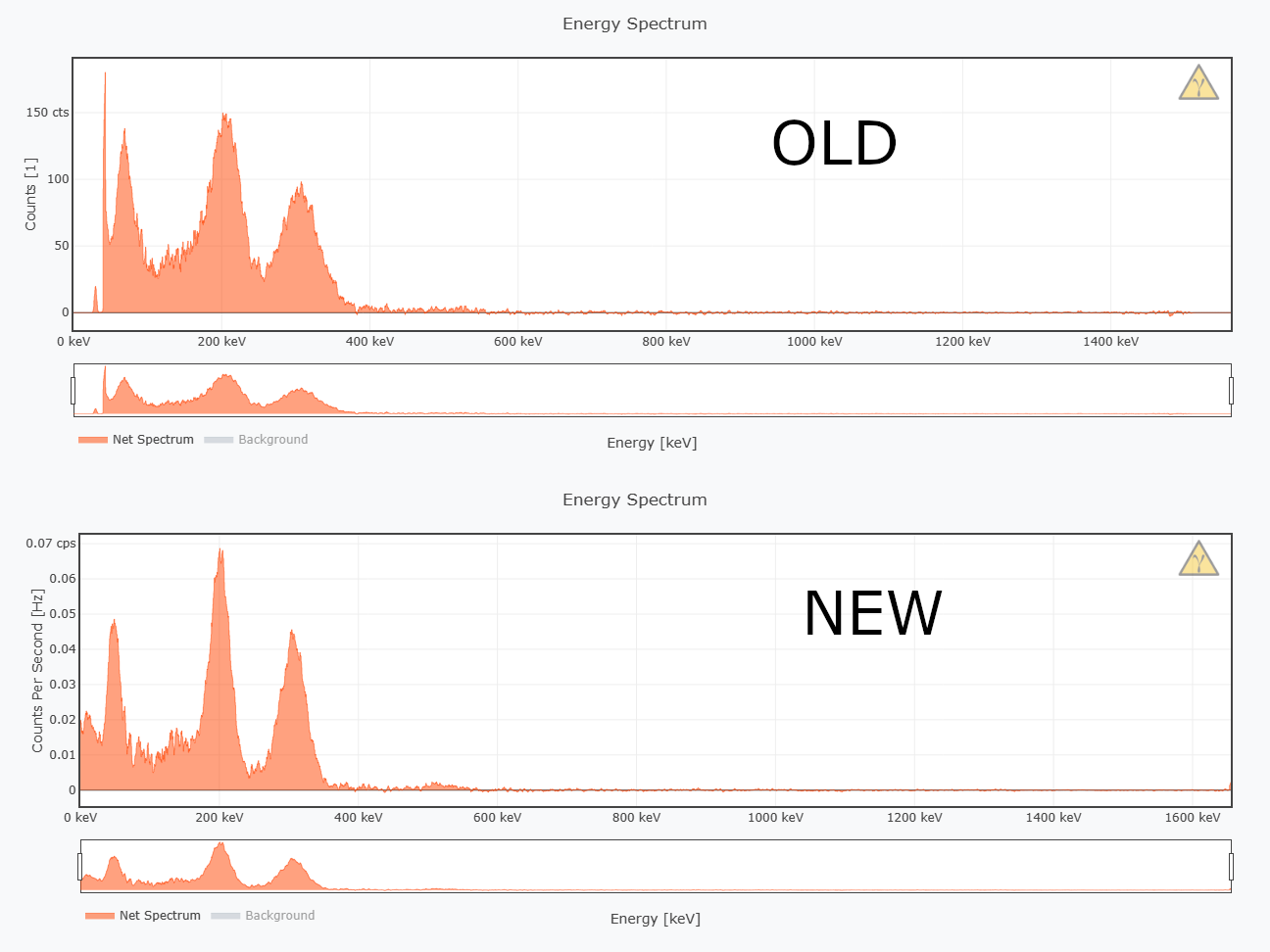Today I made a great comparison measurement with an old Rev. 2 detector and my Rev. 3 prototype. Of course again with my obligatory Lu-176 source (aka 2 LYSO scintillators).
Gain and SiPM voltage are identical here, as can be seen from the uncalibrated recording. Both detectors also have the same SiPM (MicroFC 6 mm) and scintillator (Russian 18 x 30 mm NaI(Tl)) installed. I recorded for an hour for the raw background and another hour with the Lutetium.
In principle, the two backgrounds look very similar. But you can see that the new spectrum begins further to the left, has a longer "plateau" in front of the actual curve and also ends significantly further to the right (near 4096 vs the old 3800).

The same scheme can be seen for the uncalibrated Lu-176 spectrum, only that the annoying spike of the old board at the beginning of the measuring range is not present here. I could have set the discriminator higher, but then the range would be even more limited than it already is.
Here you can also see the clear improvement in energy resolution that I have already mentioned in previous logs. The spectra are of course still a bit rough in general, this is simply due to the short measurement time.

And finally the calibrated spectrum: I did that to emphasize the new measuring range again. This is certainly not the most accurate calibration (I only took the 202 and 307 keV peaks roughly), but you can already see a clear difference.

 NuclearPhoenix
NuclearPhoenix
Discussions
Become a Hackaday.io Member
Create an account to leave a comment. Already have an account? Log In.